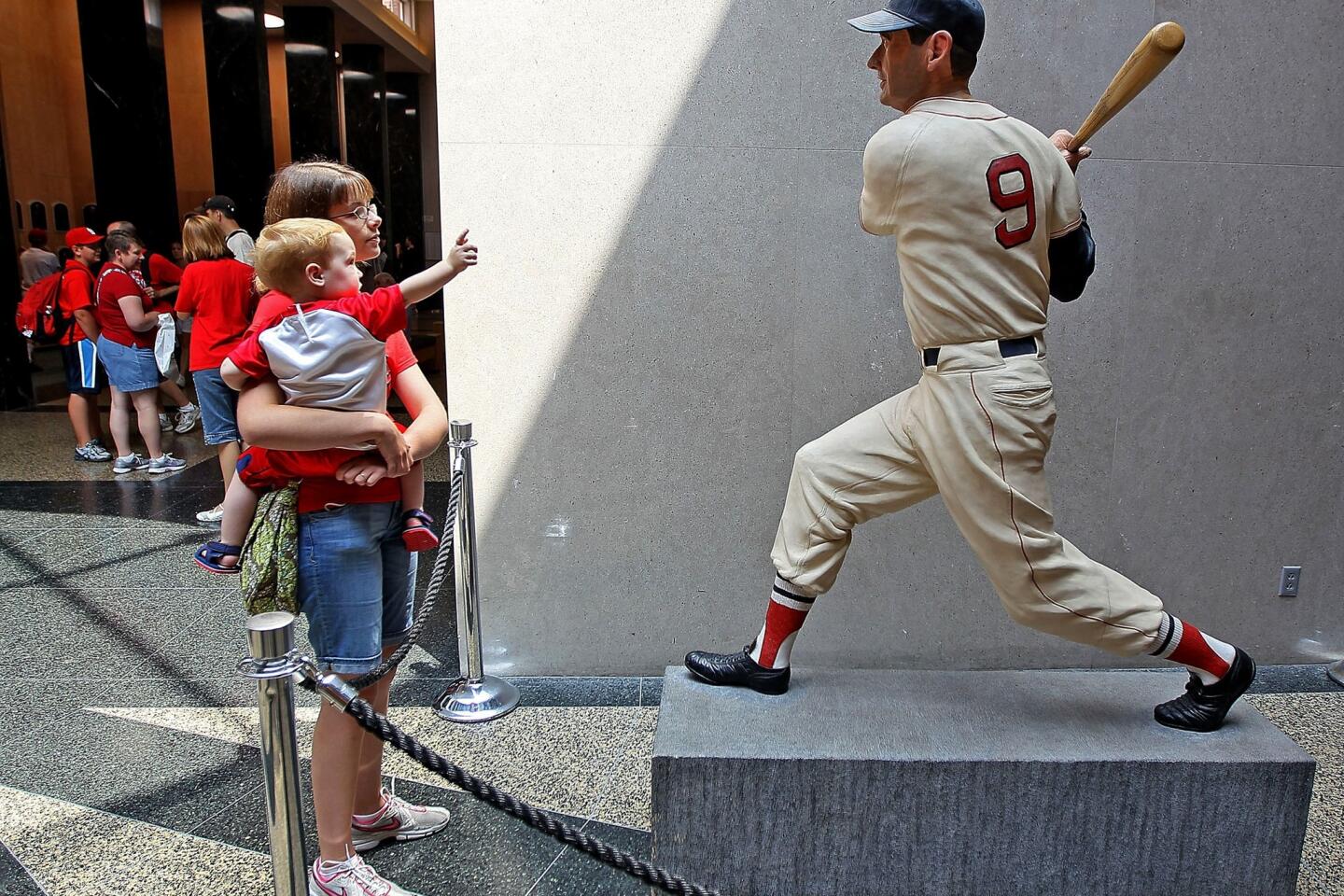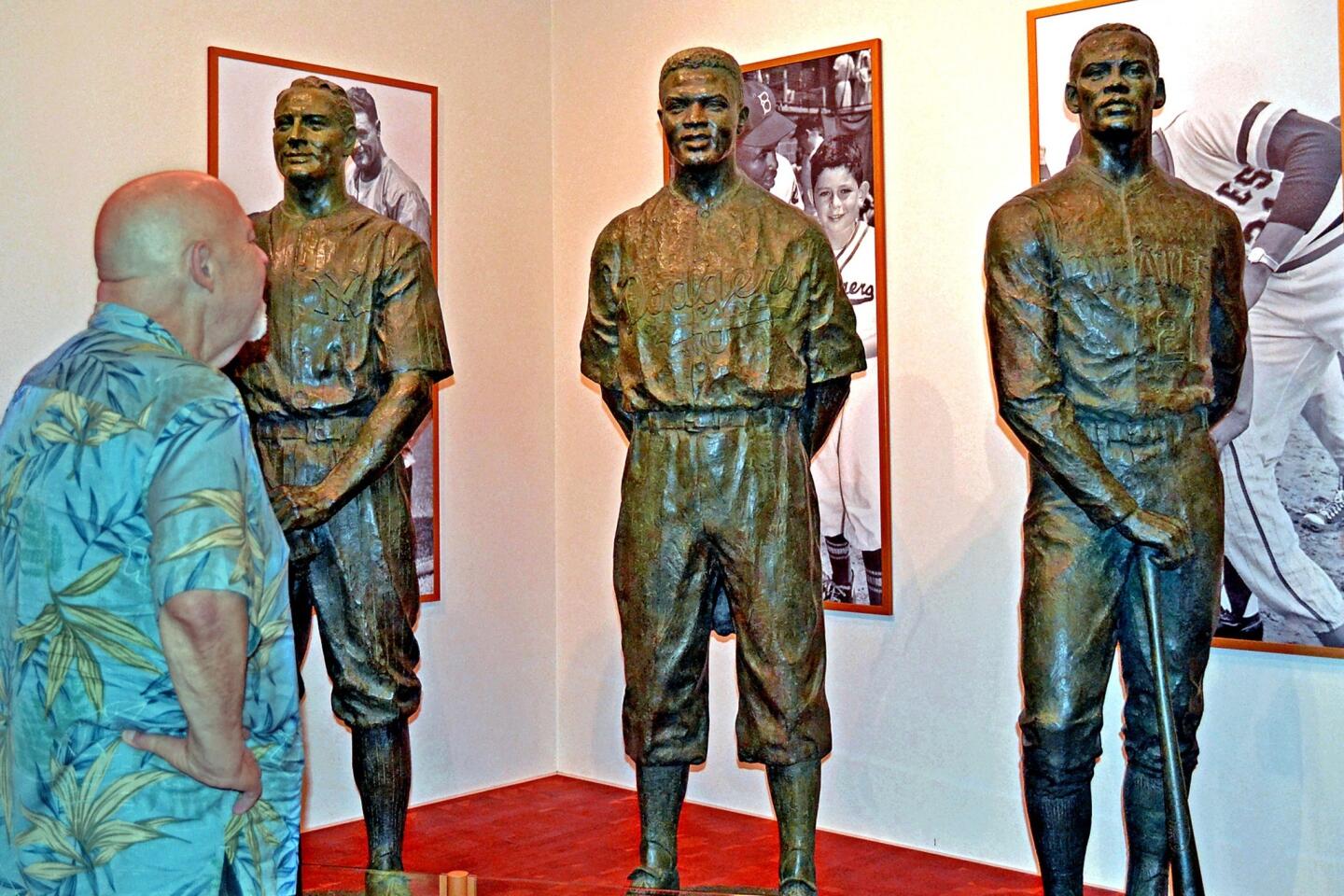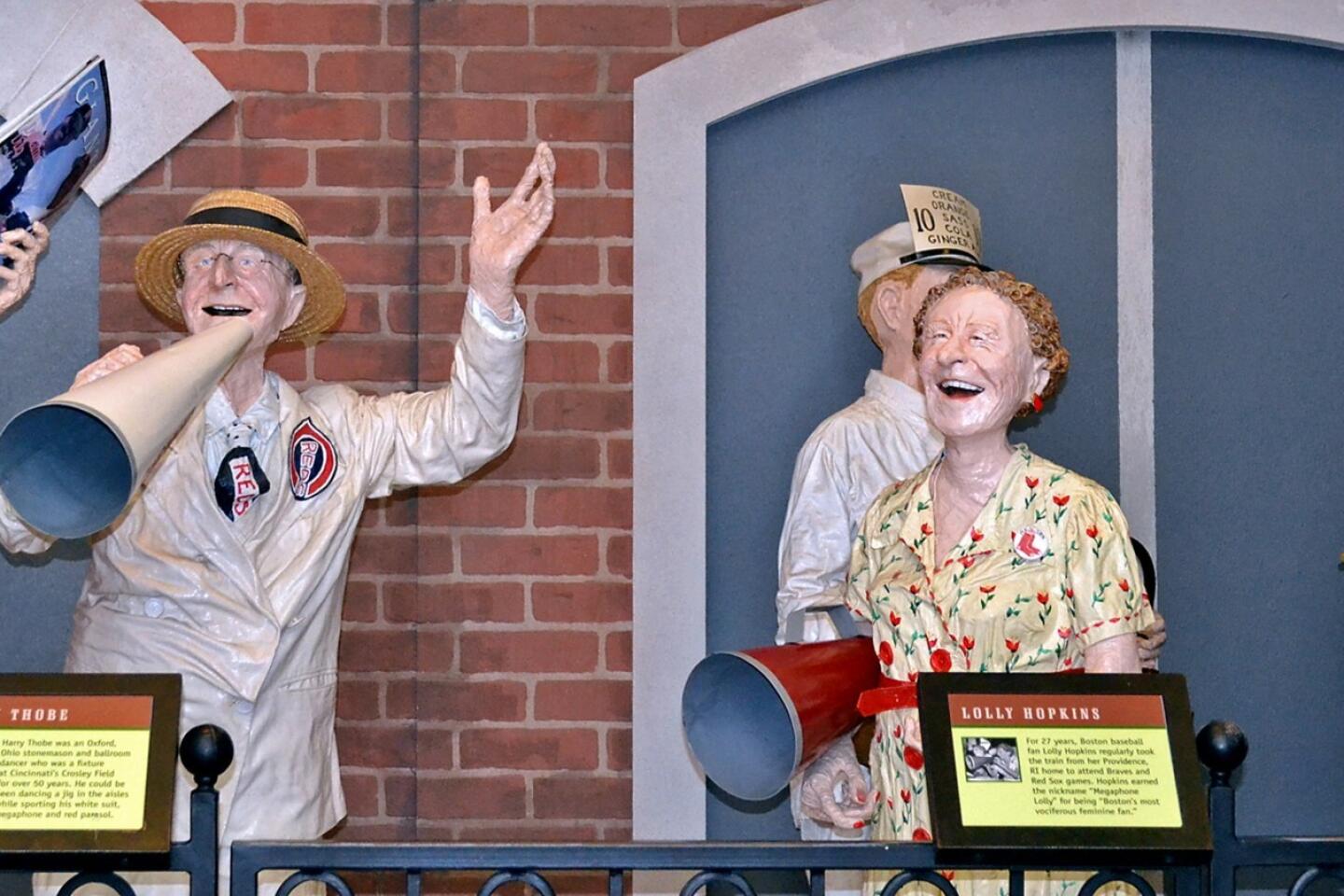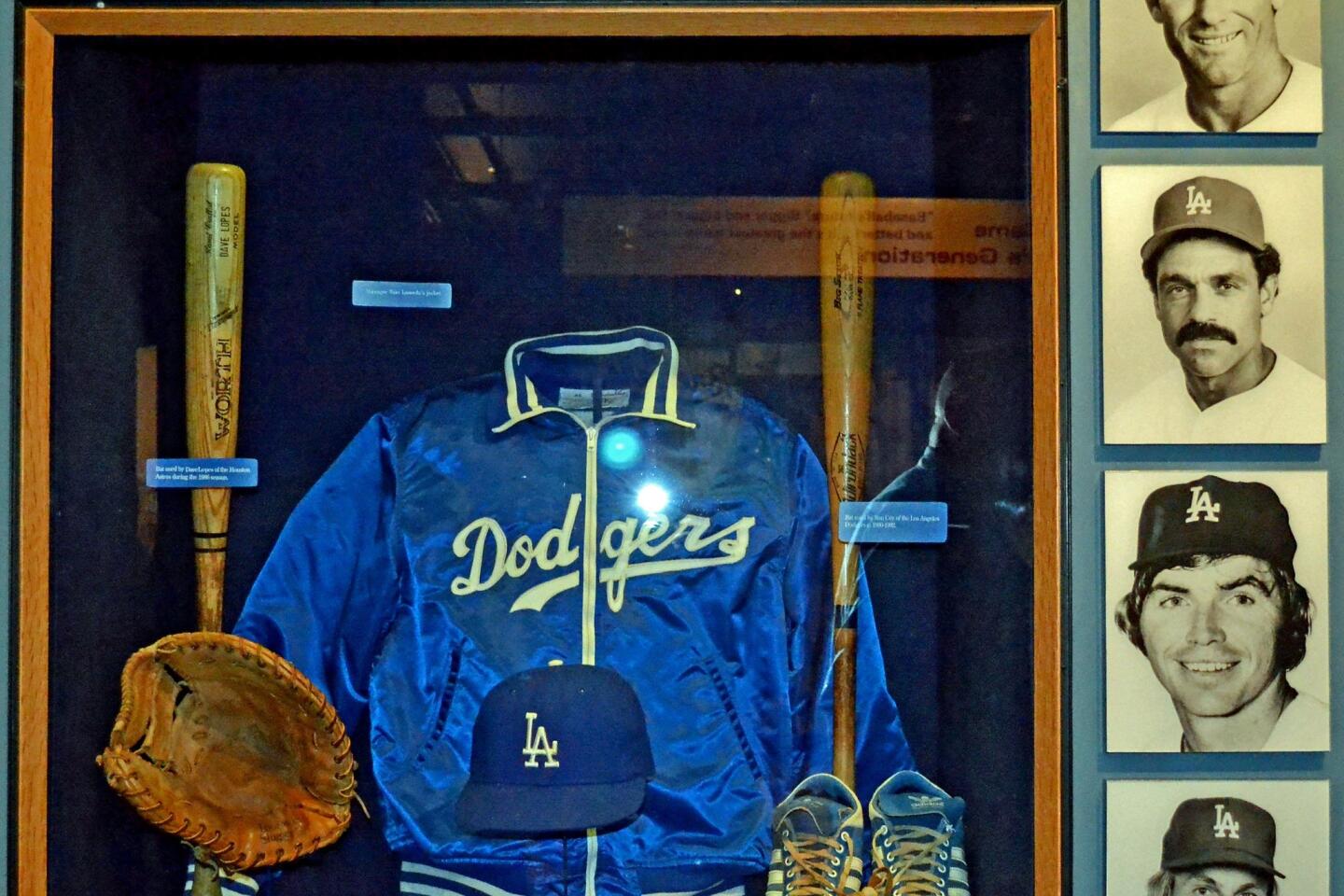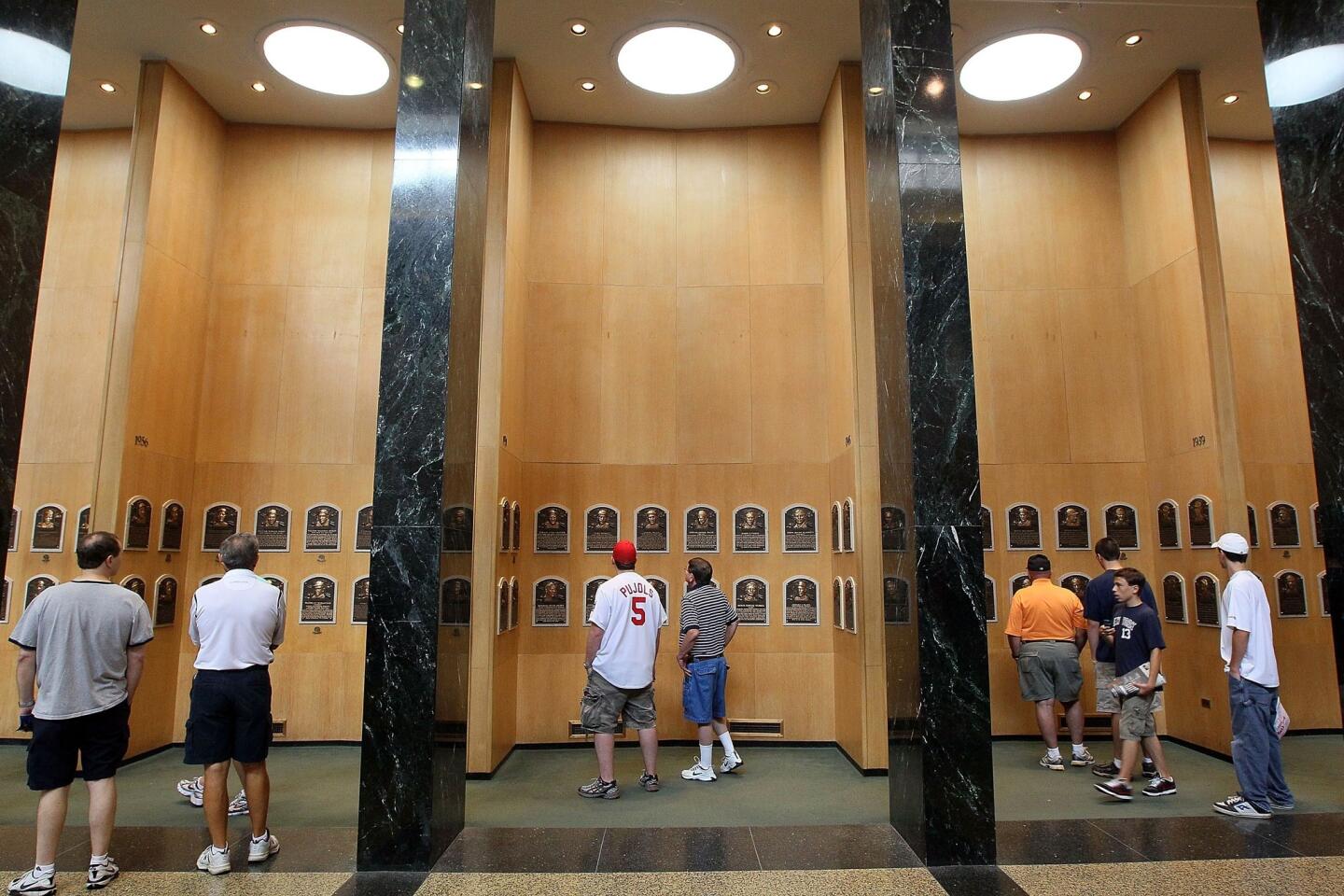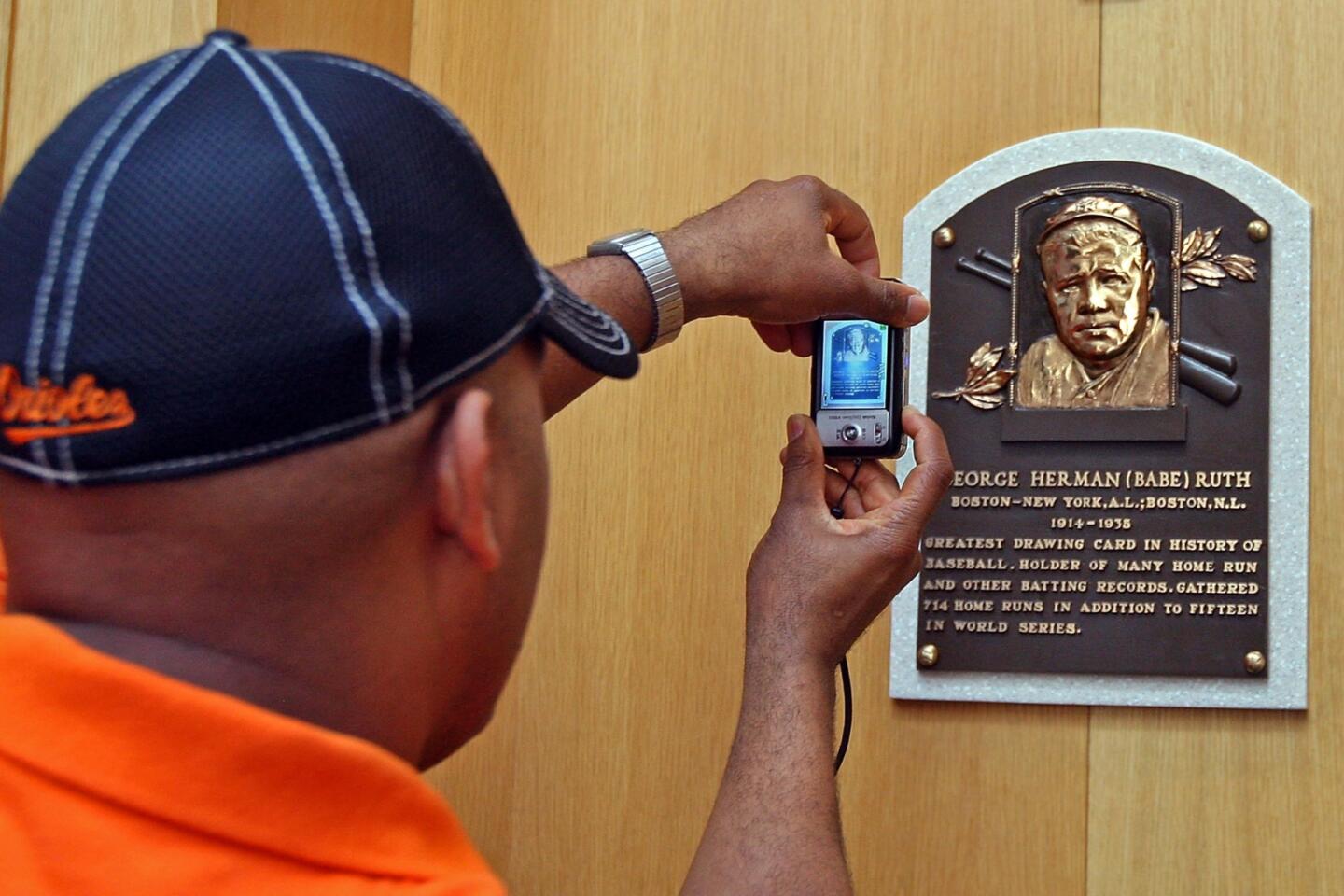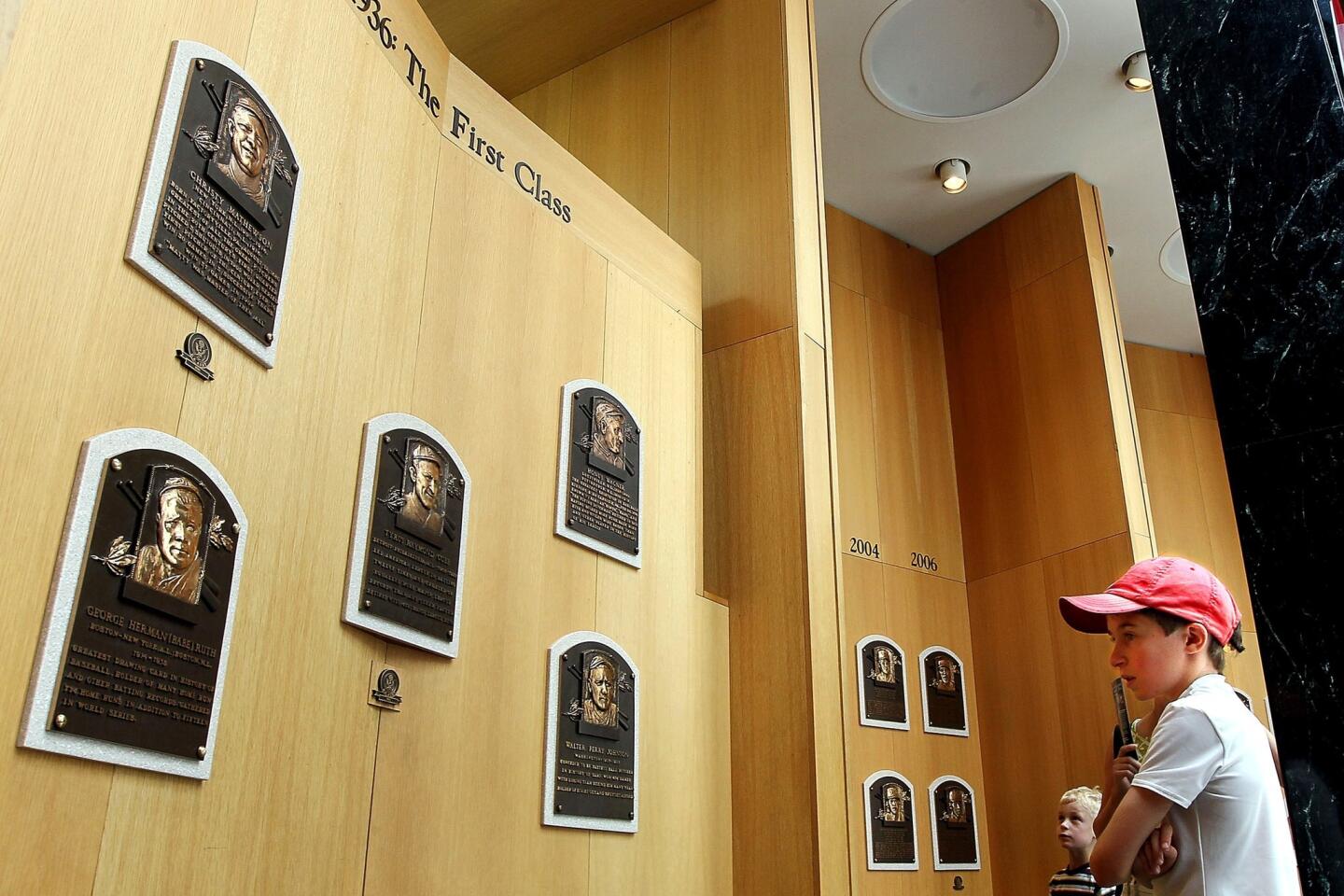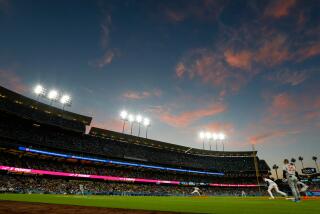Baseball’s Hall of Fame is a game-changer for fans
COOPERSTOWN, N.Y. — I go to sleep each night watched over by a portrait of Roberto Clemente. I wake up each morning and see a baseball signed by Sandy Koufax. In between, I can glimpse Los Angeles, Washington and Cleveland baseball caps hanging from the mirror in the guest room.
I don’t live in the National Baseball Hall of Fame. It just sometimes feels as though I do.
The home-field artifacts that make up part of our oddball décor — which I allow and he adores — are bush league when viewed through the prism of the real hall. In September, my baseball fan/interior decorator/husband and I made the trip to that mecca in Cooperstown.
The hall ended up in this burg because, the story went, Abner Doubleday created the game here in 1839. You have to want to come here to come here, set as it is in the rolling, wooded hills of central New York, about a four-hour drive from the Big Apple, a little more from Niagara Falls. By the time the hall opened in 1939, the Doubleday story had been debunked.
But the drive along two-lane roads did allow for a swell of anticipation. As my husband’s excitement grew, so did our speed. He prayed we wouldn’t get lost. I prayed we wouldn’t get killed.
The prayers were answered, and as we entered on this last day of summer, the pieces of one of my life’s puzzles began to fit together.
Just inside the entrance are statues of Clemente, Lou Gehrig and Jackie Robinson, who exemplify “courage and character.” My fan was so transfixed I wasn’t sure we’d see the rest of the museum, and I wasn’t sure why sheer adrenaline didn’t carry him forward.
It finally did. The memorabilia is fascinating — the American Tobacco baseball cards of Joe Tinker, Johnny Evers and Frank Chance, the Chicago Cubs double-play combo who are memorialized in the poem “Baseball’s Sad Lexicon” (“These are the saddest of possible words: ‘Tinker to Evers to Chance.’”); the gear of Dodgers Ron Cey, Davey Lopes, Steve Garvey and Bill Russell, infielders who played together for more than eight seasons; a sombrero given to Angels Manager Mike Scioscia by Arte Moreno after he acquired the team in 2003 (Moreno was the first Mexican American to own an MLB team); reproductions of hate mail sent to the immortal Robinson. They are a glimpse into the history of the game and a commentary on our country. If you’re not a fan, you’ll still be staggered by how the sport and our society intersect.
What amazed me were the spontaneous conversations that fans struck up with one another. My usually reserved husband chatted up a storm with another Dodgers fan, each adding to the other’s storehouse of knowledge in a place that was a repository of it.
We spent some time, too, in the wing honoring the writing greats, where I nodded hello to the pictures of the late Jim Murray of The Times, whom I didn’t know, and the late Joe McGuff of the Kansas City Star, for whom I once worked. Like the best players, they plied their craft with grace and good humor.
When we finally reached the actual Hall of Fame, beginning with the “class” of 1936 (Christy Mathewson, Honus Wagner, Babe Ruth, Walter Johnson and Ty Cobb), I knew time would stand still and so would my husband. He looked up at the plaques honoring Koufax and Clemente, reading them over and over.
Finally, it dawned on me that his was more than just admiration for Clemente’s and Koufax’s athleticism. These baseball players, extraordinary on and off the field, stood in for the father that one Angeleno boy lost just as he was on the cusp of manhood. They were his role models, his guide to being a grown-up, for doing one’s best and playing through adversity.
Like the father he idolized, they were his heroes. On that day, in a red-brick building dedicated to these boys of summer, they became mine too.
Info: The hall is open 9 a.m.-5 p.m. daily (until 9 p.m. in the summer) except Christmas, New Year’s and Thanksgiving. Tickets cost $19.50 for adults, $12 for seniors 65 and older, $7 for children 7-12; children 6 and younger are admitted free. Tickets may be purchased at the entrance or in advance by calling (607) 547-0397 (607) 547-0397. Other information at www.baseballhall.org.
(607) 547-0397. Other information at www.baseballhall.org.
[For the record, 3 p.m. PST Feb. 28, 2014: An earlier version of this post misspelled Christy Mathewson’s last name as Matthewson.]
Call
Send SMS
Add to Skype
You’ll need Skype CreditFree via Skype
More to Read
Sign up for The Wild
We’ll help you find the best places to hike, bike and run, as well as the perfect silent spots for meditation and yoga.
You may occasionally receive promotional content from the Los Angeles Times.
